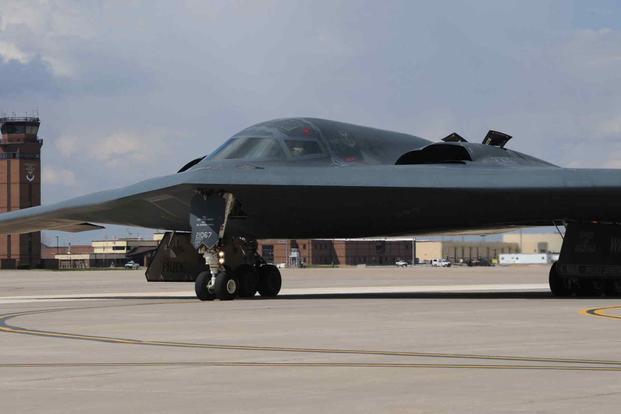When Defense Secretary Lloyd Austin directed Air Force B-2 Spirit bombers to bomb Iran-backed Houthi targets in Yemen, a move the Pentagon announced Wednesday night, it marked the first time in the 2020s that the aircraft was used in a combat operation.
The bombers conducted airstrikes on five underground weapons facilities, Austin said in a statement, and the operation was conducted to retaliate against the Houthis targeting civilian and military ships in the region.
“This was a unique demonstration of the United States’ ability to target facilities that our adversaries seek to keep out of reach, no matter how deeply buried underground, hardened, or fortified,” Austin said. “The employment of U.S. Air Force B-2 Spirit long-range stealth bombers demonstrate U.S. global strike capabilities to take action against these targets when necessary, anytime, anywhere.”
Read Next: Navy Finds Wreckage of Fighter Jet that Crashed During Training in Washington State
U.S. Central Command said in a statement Wednesday that damage assessments are ongoing and “do not indicate civilian casualties.”
The use of the B-2 Spirit bomber is significant, one aviation expert told Military.com, pointing out the use of the long-range stealth plane signals a strong message not just to the Houthis, but also to other proxies and to Iran itself that the U.S. is not to be messed with.
Retired Air Force Col. Mark Gunzinger, a former B-52 bomber command pilot and director of future concepts and capability assessments for the Mitchell Institute for Aerospace Studies, told Military.com in an interview on Thursday that there’s no doubt the announcement was meant as a signal.
“Clearly, it was intended to send messages to the Houthis that we are at an end of our tolerance of what you were doing in the Red Sea and elsewhere. Stop,” Gunzinger said.
Gunzinger added that while the Houthis were the target this time, the use of the B-2 makes clear that the warning was meant for others as well.
“It’s also a message to Iran’s other proxies, no question about it, and to Iran itself,” Gunzinger added. “The United States is willing to use this considerable military power and project it from the [continental United States], if necessary, and strike without prior warning.”
One of the last public acknowledgments of the B-2’s use in combat was nearly eight years ago in January 2017, when two of the bombers from Whiteman Air Force Base, Missouri, flew a 33-hour mission to North Libya and killed roughly 100 Islamic state militants, according to Air Force officials.
The bombers operate out of Whiteman Air Force Base, capable of delivering large payloads of bombs anywhere around the globe through the aid of midair refueling. The aircraft has been operational for the U.S. military since the mid-1990s, with a payload of 40,000 pounds and a fuel capacity of 167,000 pounds.
While the type of ordnance used in the mission against the Houthis was not disclosed, Gunzinger speculated it may have been the GBU-72/B — the Air Force’s 5,000-pound bunker buster bomb.
Use of the B-2 Spirit bomber in combat also comes as the Air Force is working to roll out its new B-21 Raider bomber.
The B-21, unveiled in late 2022, is currently undergoing flight testing, officials said last month in an update.
The Department of Defense has previously announced it plans to buy around 100 B-21s — which is more than the current B-2 and B-1B bomber fleets combined. Each new B-21 bomber costs an estimated $700 million.
Currently, the Air Force has 20 B-2s, one of which is used for testing, according to a service fact sheet.
Related: Air Force’s B-21 Raider Making More Test Flights as Service Eyes 2 New Basing Locations
Story Continues
Read the full article here

